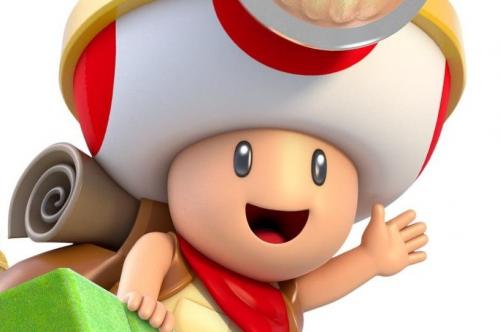Posted 21 July 2005 - 09:27 PM
First, a general comment: the beautiful thing about the Harry Potter (HP) books is that they are not just kids’ books. My wife and I are both college instructors (She teaches communication, I teach English literature), and we love the HP books (my nephew turned us onto them).
Now, my thoughts about the latest book.
DUMBLEDORE IS NOT DEAD and SNAPE HAS NOT GONE OVER TO THE DARK SIDE! After reading all of JK’s books twice or more, I have finally figured out her style. And while reading this latest book, I was struck by how many clues she left making it clear that a) Snape did not kill Dumbledore, and B) Snape is still working for Dumbledore, even if the Order does not realize it. Allow me to explain.
Here’s why I think Dumbledore (D for short) is not dead – First, he had forewarning of the events. We learn in Chapter 27 (The Lightning-Struck Tower) that D was aware of Draco’s ongoing attempts to kill him throughout the year. However, what many readers may have missed was that D was also aware of the imminent attack by the Death Eaters. How, you ask? He was forewarned by Professor Trelawney. In Chapter 25 (The Seer Overheard), Professor T explains to HP that she does not think D will want to see her. She explains, “The headmaster has intimated that he would prefer fewer visits from me. I am not one to press my company upon those who do not value it. If Dumbledore wants to ignore the warnings the cards show … Again and again, no matter how I lay them out – the lightning-struck tower. Calamity. Disaster. Coming nearer all the time…” (p. 543).
Now consider D’s words to Draco about options: “I can help you, Draco. [Voldemort] cannot kill you if you are already dead. Come over to the right side, Draco, and we can hide you more completely than you can possibly imagine” (pp. 591-92). Hmmm…I wonder if the same is not true of D as well as Draco. If D were to fake his death, he could fly under the proverbial radar and work behind the scenes to help HP defeat Voldemort, perhaps far more effectively than he could if he had to report back to Hogwart’s and the nosey Ministry regularly.
If you still doubt the possibility that D might have faked his own death with Snape’s help, consider these additional tidbits. Let’s start with the description of D’s dead body: “Dumbledore’s eyes were closed; but for the strange angle of the arms and legs, he might have been sleeping” (p. 608). Uhhh…perhaps he is just sleeping? Or consider the disposal of D’s body. At the funeral, Hagrid carries D’s body, but is it really D's body? We don't know because we never actually see D’s body; what we see is Hagrid carrying a “purple velvet spangled with golden stars” (p. 643). Harry just assumes it is D's body. (And remember, it was Hagrid who moved D’s body following his death.) Finally, consider this bit of symbolic foreshadowing: “White smoke spiraled into the air and made strange shapes: Harry thought, for one heart-stopping moment, that he saw a phoenix fly joyfully into the blue, but the next second the fire had vanished” (p. 645). A phoenix? The symbol of death and rebirth? After six HP books, we should know that such symbolism has significance. Rowling does not usually waste such images.
Now, this interpretation, of course, relies on Snape being a good guy working for D as opposed to a bad guy working for V. And there’s certainly some ambiguity here, but clearly, D trusts Snape, and not for the silly reason HP gives (about Snape being remorseful over telling V about the prophecy) to the others in the infirmary. We see this trust throughout the book, but we see it most clearly following D and HP’s return from the Cave. When HP says he will go get Madame Pomfrey to help, D insists he get Snape instead. He insists not once, not twice, but three times no less! Then, when they fly to the tower, D tells HP, “Go and wake Severus. Tell him what has happened [about the Dark Mark] and bring him to me. Do nothing else…” (p. 583). If D did not trust Snape completely, he would not tell HP to go get him, especially when the castle is under siege! (And don’t forget that D had forewarning regarding this attack, which means he had plenty of time to whip up a counterplan with Snape.) That’s why I don’t buy the narrator’s assertion that D was fearful of and “pleading” with Snape when he finally arrived at the tower.
And let’s talk about that tower scene a little more. Does anyone else find it a little odd that Snape comes upon the scene, pushes Draco aside, and kills D, just like that? This is especially interesting since the other Death Eaters refused to do the deed because their orders were that Draco – no one else – should kill D. Does Snape not know that these are the orders? Of course he does. And yet, in the next chapter, Snape chastises two Death Eaters who attack HP with a spell: “No!” roared Snape’s voice…; “Have you forgotten our orders? Potter belongs to the Dark Lord – we are to leave him alone! Go! Go!” (p. 603). Now, call me crazy, but it sure seems like Snape is insisting on following orders here when it comes to protecting HP. Why, then, the rush to disobey orders when it came to killing D unless something deeper is going on?
Consider also the description of the effects of Snape’s spell on D in the last paragraph of chapter 27. The spell strikes D in the chest and blasts him into the air. But then, “for a split second, he seemed to hang suspended beneath the shining skull, and then he fell slowly backward, like a great rag doll, over the battlements and out of sight” (p. 596). He fell “slowly”? Like a “rag doll”? You know, when I was young, I had a Raggedy Andy doll, and that thing’s legs and arms could get twisted up in all kinds of weird ways. If it could have closed its eyes, you’d have sworn it was sleeping! My point here is that maybe the death curse Snape cast wasn’t really a death curse at all. Don’t forget that Snape was quite adept in his youth of writing spells – just ask HP and Draco, who both learned firsthand how creative and advanced Snape’s original spells could be!
Also, consider Snape’s attitude and behavior toward HP in chapter 28 (The Flight of the Prince). He has many chances to hurt or kill Potter (at one point, he’s standing over a defenseless Harry but does nothing to hurt him). Or consider his comments to Harry as he effortlessly blocks spell after spell from the young wizard: “Blocked again and again and again until you learn to keep your mouth shut and your mind closed, Potter!” (p. 603). Call me crazy again, but I have to ask why Snape would tell his enemy that he can block all of Harry's attacks because HP cannot spell silently nor close his mind. Doesn’t this seem like a big-time advantage Snape would want to keep to himself? Can anyone imagine a school bully telling his intended victim, "Hey, the reason you can't hurt me with your fists is because I can see your punches coming and therefore can block them with ease. You might try kicking me with your foot instead. That would make it harder for me to defend myself." I seriously doubt any bully would say this. So why would Snape essentially tell Harry how to more effectively fight? If Harry is truly Snape's enemy, he would never have said this. But if Snape is still working against Voldemort and on the side of good, he would say something to this effect. Therefore, I prefer to read this statement as the last lesson Professor Snape, a double-agent working for the Order by seemingly betraying the Order, offers his young pupil. After all, if Harry can’t hurt Snape because he’s telegraphing his spells, he surely won’t be able to hurt Voldemort, whose even more powerful than Snape.
So there you have it. These are some of the main reasons (I have others as well, but these are the biggies) why I am convinced that Dumbledore is still alive and why I think Snape is still ultimately an Order of the Phoenix ally and not an enemy. I would welcome any comments and criticism from anyone who has put forth the effort to read this extended analysis.
Thanks for your time.

That would be pretty sneaky of JK if its the truth




















